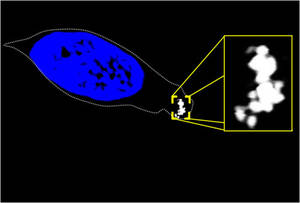Researchers this week have found the very cells that make up the internal compass of migratory animals. These cells are able to detect the position of the animal in relation to the Earth's magnetic field, and they do this because the cells themselves contain a magnetic component.
 Led by Stephen Eder of Ludwig-Maximillians University in Munich, the international team took cells from the olfactory organ of a trout - that's the trout's snout - and placed them in a strong, rotating magnetic field under a microscope. Because of the way in which these cells had been prepared, they were able to move freely as the magnetic field in which they were placed rotated. When the magnetic field was applied, only the magnetic sensory cells would follow the movement of that field.
Led by Stephen Eder of Ludwig-Maximillians University in Munich, the international team took cells from the olfactory organ of a trout - that's the trout's snout - and placed them in a strong, rotating magnetic field under a microscope. Because of the way in which these cells had been prepared, they were able to move freely as the magnetic field in which they were placed rotated. When the magnetic field was applied, only the magnetic sensory cells would follow the movement of that field.
In previous years researchers have found it rather challenging to identify these cells because their exact location is quite often a subject for debate and because, in order to work effectively, these cells have to be few and far-between. When the team did identify the magnetic cells, they discovered that for every 10,000 epithelial trout snout cells, there were only about 4 of these magnetic sensory cells. And this rarity was necessary because the magneto-sensing cells had to contain a magnetic element, which itself would produce a magnetic field and could disrupt other sensory cells nearby.
The researchers believe that the cells contain the magnetic substance magnetite, which is about as magnetic as you can get in naturally occurring minerals. The next question is, given that these cells cannot rotate freely when trapped in the tissue of a living animal, how do they signal changes in the magnetic field? In the trout cells, these crystals of magnetite are locked inside the cell membrane, and the researchers hypothesise that they cause the membrane to stretch when pulled in a particular direction by the earth's magnetic field. So, at a cellular level, it may be that this membrane stretching induces a signal to the animal, telling it which way is north.
And that work is published in this week's edition of PNAS.










Comments
Add a comment